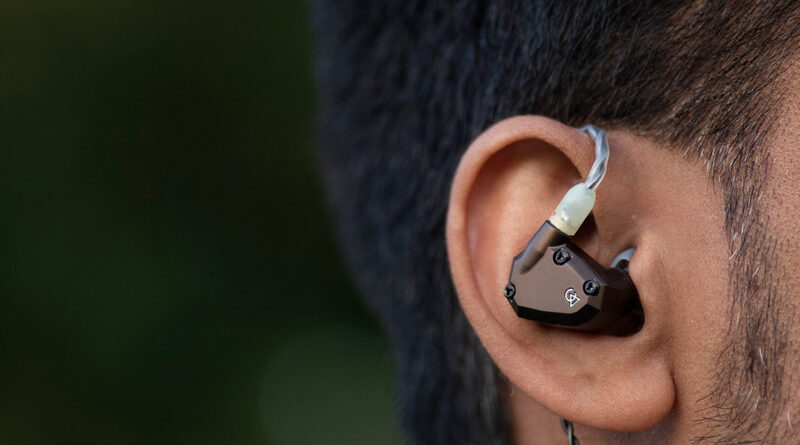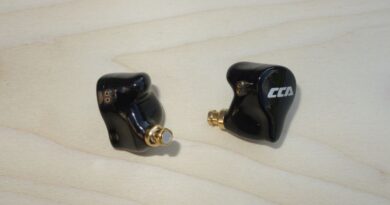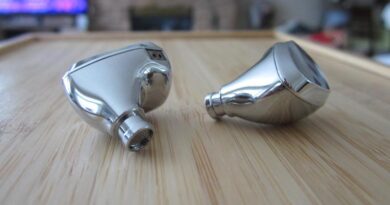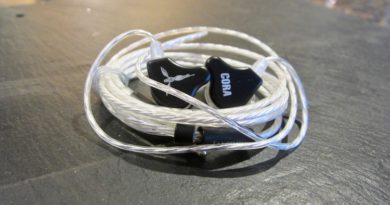Campfire Audio Holocene Long-Term Review – The Slow Burn
Pros — Excellent build
– Good accessories
– Very comfortable for long sessions
– Dense, laid back sound that manages to produce good amount of resolution
– Excellent staging and imaging
Cons — Mid-bass can be bloated at times on the Holocene
– Upper-midrange recession won’t please those looking for up-front vocals
– Treble can exhibit some BA timbre
– Somewhat source and tip-sensitive sound
In this Article
INTRODUCTION
To state that this review has been, um, long overdue, would be an understatement.
I received the Campfire Holocene in the autumn of 2021. It’s been nearly 3 years since then, and somehow this one review never ended up being finalized. However, what sparked a prompt rectification of that is that the Holocene are not being produced anymore, a news I came to know during this High End Munich 2024.
There are still some in-stock pieces, but once those are gone, the Holocene will become history. And it would be a darn shame if I did not review these heavily underrated IEMs while they are still being sold.
Note: the ratings given will be subjective to the price tier. Campfire Audio was kind enough to send me the Holocene for evaluation.
Sources used: Sony NW-A55, Lotoo PAW Gold Touch, Cayin C9
Price, while reviewed: $550 Can be bought from Projekt Akustik.
PHYSICAL THINGS AND USABILITY
PACKAGING AND ACCESSORIES
One thing Campfire Audio does exceedingly well is the overall presentation and packaging. Moreover, the graphics and design language are customized for each model, resulting in a unique experience across the brand’s entire lineup.
As for the accessories, the Holocene include both silicone and foam tips. Silicone tips come in two different varieties: the excellent Final E-type tips, and Campfire Audio’s own tips that have a thinner surface. The stock cable is of the smoky litz variant with “luminescence” infused 3.5mm plug and mmcx connectors.
Finally, the carry case is again customized specifically for the Holocene, offering ample protection thanks to felt-lined innards. All in all, excellent presentation, packaging, and stock accessories.
BUILD QUALITY
The Campfire Holocene have a CNC-milled aluminum chassis, which has become a signature design language for the mid to higher-end Campfire Audio IEMs. The chassis has a two part design where the faceplate is screwed down against the inner part.
One common complaint about this particular shell design is that the color fades away around the extreme angles. I have asked Campfire about this and they acknowledge the issue, but it’s also a difficult one to avoid since the color deposition is not as thick near the edges as it is on a more flat or rounded surface.
Campfire uses mmcx connectors on the Holocene, which are some of the highest quality mmcx connectors around. I have changed the cable over 30 to 40 times at least and the connectors are as snug as ever.
Finally, there are no vents on the shell, which may cause slight pressure build-up.
COMFORT, ISOLATION, AND FIT
Due to the ergonomic shell and lightweight design, the Holocene have excellent comfort and fit. One area of contention can be the ventless design which may create some pressure buildup. For me, however, this was not distracting enough to be an issue.
SOURCE AND EARTIPS
At 94 dB @ 7 mVrms sensitivity and 5 ohm impedance, the Holocene can be quite tricky to drive. Their impedance curve is also non-linear, resulting in a reduction of bass/treble boost as the output impedance of the source increases. As such, somewhat surprisingly, the Holocene tend to pair better with sources such as Sony NW-A55 which has over 3 ohms output impedance.
For the majority of the review, I used the Sony NW-A55 as a source, as I found the pairing with Holocene to be perfect for using during commutes. As for the tips, I settled on Spinfit CP-500, even though CP-100+ also worked well.
DRIVER SETUP
Campfire Holocene utilize a triple BA driver setup, with each of the driver covering the bass, midrange, and the treble respectively. The drivers are integrated into a 3D-printed acoustic chamber that helps in shaping the frequency response, alongside controlling resonance and smoothing out abrupt dips and peaks in the response.
CAMPFIRE HOLOCENE TONALITY AND TECHNICALITIES
The general tuning of the Holocene can be described as warm and laid-back, with noticeable recession in the upper-midrange.
In fact, looking at the graph, it’s not unusual to be surprised given how much of a departure the Holocene is from the current trend of upper-mid and sub-bass boosted tunings. The near-flat graph from 20 Hz to 1 kHz does suffer a bit from the lack of clarity, but the treble is elevated just enough to add some sparkle into the mix.
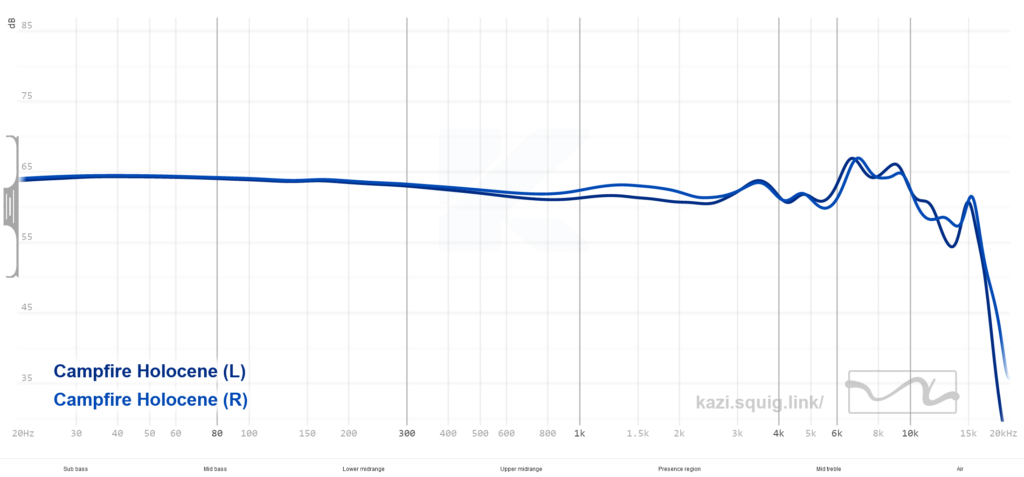
The bass quality is on the higher side, given the typical lack of physicality when it comes to BA bass. The Holocene has dense sub and mid-bass, with decent enough punch and slam. It won’t rattle your brain with sub-bass rumble, but the lows have enough authority to take the center-stage in many tracks.
It’s the lower-mids that suffer from this bass-forwardness, as the mid-bass bloom may thicken the midrange too much for those who prefer clarity over coloration. The upper-mid dip further softens up the mids, which results in soaring vocals and guitar riffs often being pulled back into the mix instead of cutting through.
The source sensitivity can be a blessing in disguise here, since a source with higher output impedance will lower the bass, resulting in more prominent midrange.
The treble response is more interesting here, as it almost follows the Andromeda type of treble tuning – sparkly, articulate, without being overbearing or fatiguing. The Holocene do not quite match the nuance of Andromeda’s treble, as the BA timbre can be quite apparent. However, the overall transition from lower to upper-treble is really well done.
Cymbal hits and hi-hats have adequate shimmer and do not decay abruptly. Bells and chimes resonate just as they would in real life, and this adds a sense of immersion that’s hard to find in this price range. The stage width is especially noticeable, partly due to this extended treble and partly due to the upper-mid recession.
Imaging is precise on the Holocene, with instruments placed in both cardinal and ordinal directions being easy to follow. Overall resolution and instrument separation lags behind best-in-class due to the mid-bass prominence, but the Holocene are not necessarily tuned with raw resolving prowess in mind.
Finally, macrodynamic punch is not as “dramatic” as certain DD hybrids in this range, while microdynamic shifts are well portrayed.
SELECT COMPARISONS
The Dunu Studio SA6 were released around the same time as the Holocene and have a six BA configuration – exactly twice the BA drivers of the Holocene. The tuning is quite different with the SA6 having more prominent upper-mids. The general tone and timbre of the SA6 are very pleasing, with superior clarity in terms of vocals or guitars (both electric and acoustic).
It’s the sense of “atmosphere” where the SA6 fall behind the Holocene, along with spatial qualities such as imaging and staging. The Holocene are more immersive, while the SA6 can sound too forward at times with a lack of nuance in the presentation.
The Sennheiser IE 600 are single-dynamic driver IEMs, with their diminutive and ergonomic Zirconium-alloy shells being one of the key highlights. The IE 600 have more prominent upper-mids and even more pronounced sub-bass and treble. All these combine for a very exciting presentation that has dynamics and punch for days. The Holocene fall behind in terms of “raw” energy and even, surprisingly, instrument separation.
The IE 600 have their own pitfalls though, with the metallic treble timbre that can get overbearing in many tracks. The staging is also not as expansive, albeit the staging is just as precise, if not better.
In short, the Holocene have held up quite well over the last three years, which is a rare feat in the IEM landscape that moves at a breakneck speed.
CONCLUDING REMARKS
The Holocene have an unconventional tuning, and that’s their biggest letdown and largest appeal. I am tired of yet-another-Harman-variant, or one of those reviewer collabs that parrot a smoothed FR graph without even considering the driver setup and how to maximize the drivers themselves.
Campfire was bold enough to tune the Holocene the way they did – focusing on an atmospheric presentation instead of repeating the same old graph for the umpteenth time. It’s easy to dismiss the Holocene as “poorly tuned” for not following an “academic target”, but give them a listen for a while and they will grow on you over time, as they did for me.
The Holocene are slow burners, but they are also going extinct soon. Grab a pair if you can snag them for under $500 or so, especially if you are a collector, or just need a break from trend-following copycats.
MY VERDICT
4/5
DISCLAIMER
Our generic standard disclaimer.



